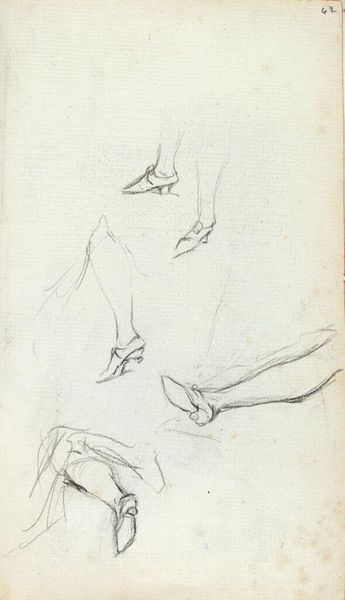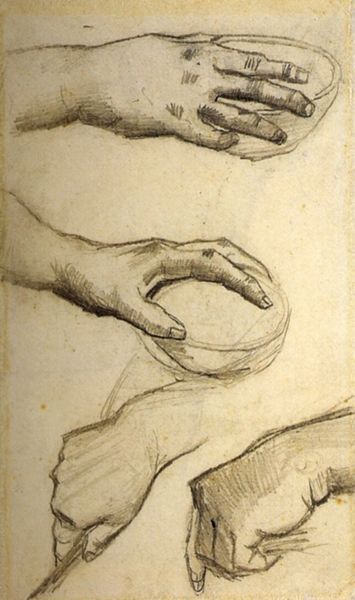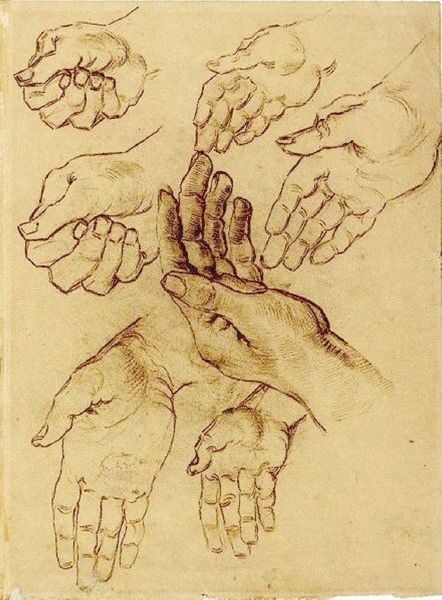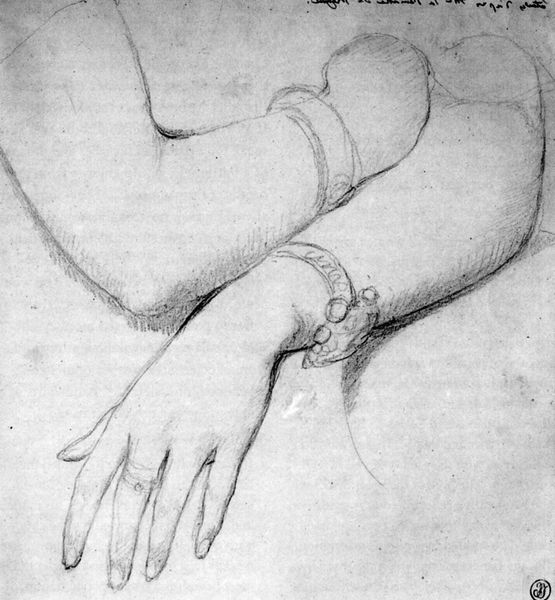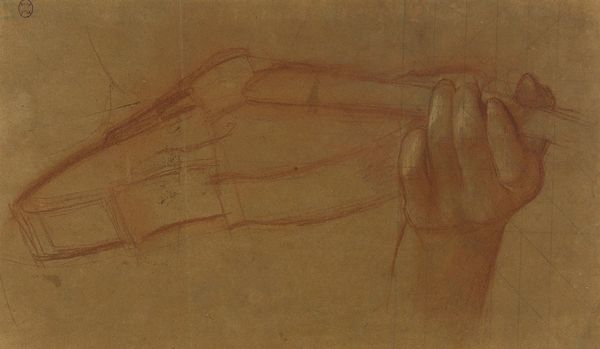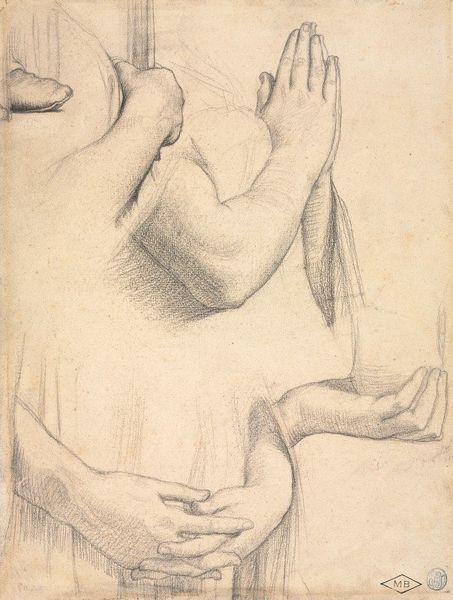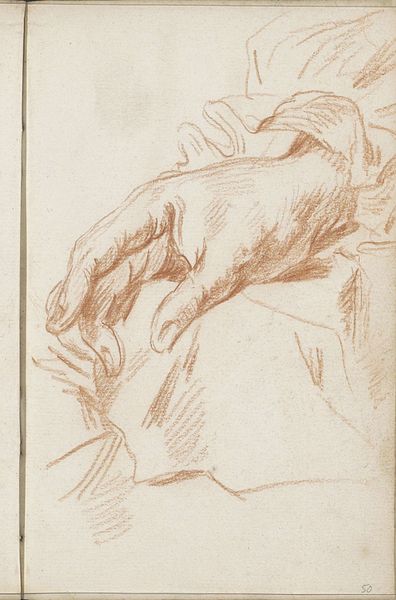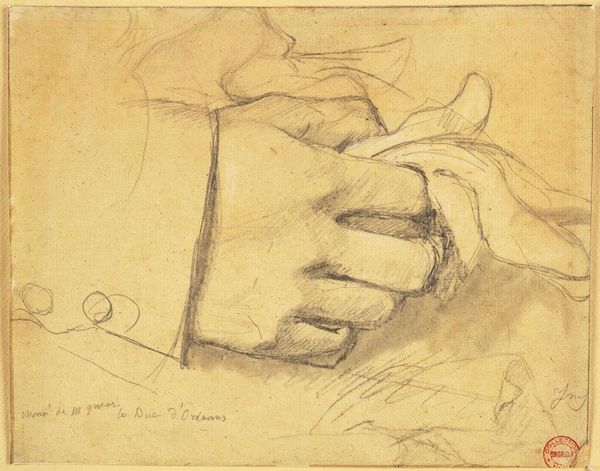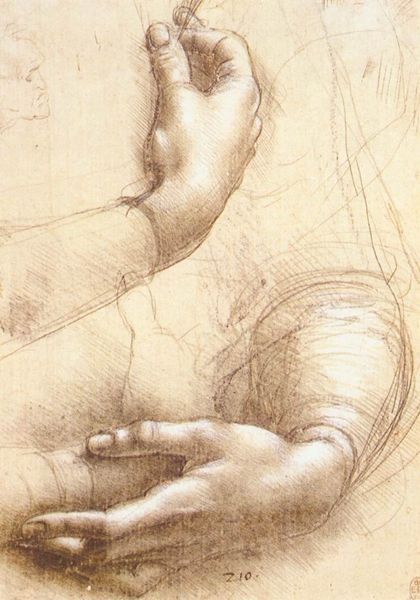
drawing, dry-media, pencil
#
portrait
#
pencil drawn
#
drawing
#
self-portrait
#
pencil sketch
#
charcoal drawing
#
11_renaissance
#
dry-media
#
pencil drawing
#
sketch
#
pencil
#
portrait drawing
#
northern-renaissance
Dimensions: 15.3 x 20.6 cm
Copyright: Public domain
Editor: This drawing is "Studies of the Hands of Erasmus of Rotterdam" by Hans Holbein the Younger, created in 1523. It’s made of pencil, and the detail is captivating. What do you see when you look at this piece? Curator: Holbein’s drawing gives us an intimate glimpse into the world of intellectual power during the Renaissance. Erasmus was not just any scholar; he was a towering figure whose writings shaped religious and political discourse. Holbein's studies present Erasmus’s hands, tools of his trade. The careful observation speaks to the value society placed on scholarship, literacy, and communication at the time. Editor: So, it’s about the societal importance of writing? Curator: Exactly! Consider that Holbein made this drawing in preparation for a painted portrait. The hands weren't mere details; they symbolized Erasmus's identity and the power of humanist thought. They show him in the act of creation and are meant to convey his intelligence. Editor: The hands almost look like portraits themselves. Did Holbein usually give hands this much attention? Curator: Yes. He captured sitters beyond physical appearance, reflecting status, values, and roles within society. Think of the politics of imagery. By emphasizing hands so precisely, Holbein elevates Erasmus beyond a mere likeness to an icon of humanist thought. Consider the symbolism – are they the hands of a scholar, or something more? Editor: That's interesting, it makes me consider who gets portrayed in such detail, and why. Thank you for helping me view this work in its historical context! Curator: And you helped me remember the subtle art of portraiture as propaganda! It shows the important intersection of art and socio-political power.
Comments
No comments
Be the first to comment and join the conversation on the ultimate creative platform.
